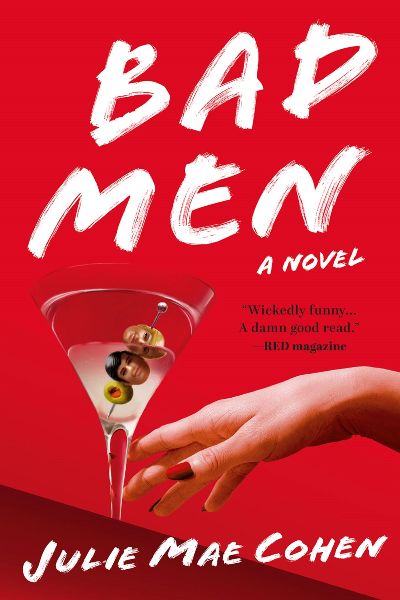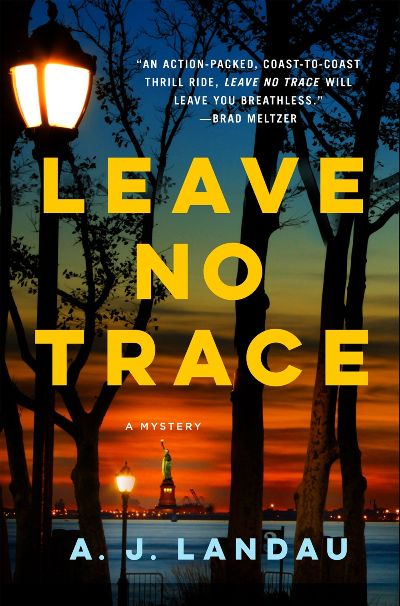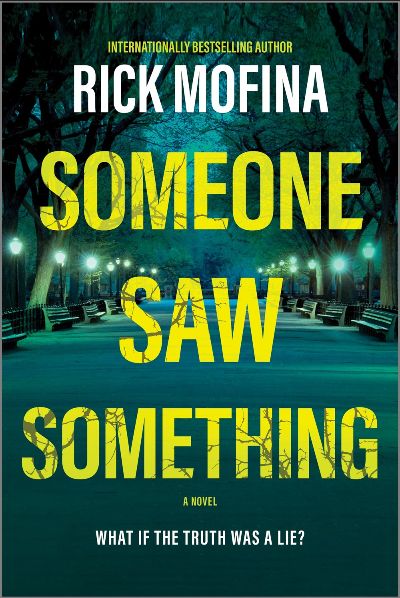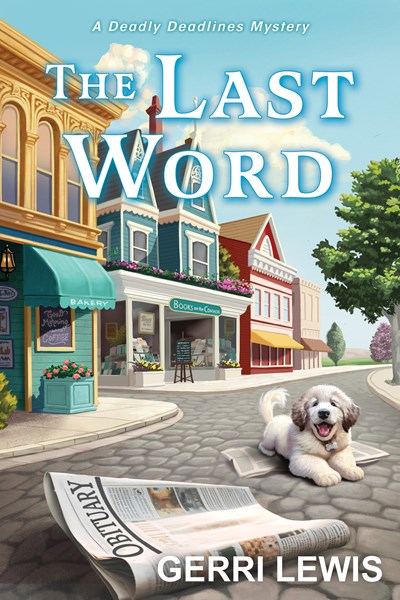This is the year in which British women are taking up arms—or knives, poisons, or other instruments—and knocking off the bad men in their lives, from abusive husbands to rapist uncles to misogynistic politicians. Saffy Huntley-Oliver—socialite, thrice an heiress, and a devoted serial killer—loves nothing more than eliminating such men. “Killing bad men is my private hobby, my passion project, the thing that makes me tick. It’s my own humble attempt at smashing the patriarchy.” She got her start early on by drowning her stepfather, who was abusing her and about to move on to her younger sister, and she hasn’t stopped since. Until she crosses paths with famed podcaster and big-time crush Jon Desrosiers, who has made a career out of tracking down serial killers, often aiding the police. Can opposites attract? It’s rough at first, as Jon is going through his own troubles—like a divorce—and is ready to give up his obsession with serial killers (is he glamorizing them?) in the hopes of winning his wife back. It’s one part rom-com and two parts crime fiction as the story expertly ricochets between Saffy and Jon. Every detail is absolutely perfect, from Saffy’s posh wardrobe and lavish apartment to Jon’s rescue dog, Girl, and the annoyance of fandom. Humorous? Totally. Dark? Absolutely. A debut? Impressive. For more feminist murderers, try How To Kill Men and Get Away With It, How to Kill Your Family, and The Best Way to Bury Your Husband.
Review
Katharine Wright, a teacher when we meet her in 1903, has her work cut out at home as well as at the high school where she teaches Latin and Greek (but not advanced classes, because “we can’t have a woman teaching upperclassmen”). At home, her father has forbidden her to marry, as her mother has died and he and his sons need a woman to take care of them. Two of those sons are Wilbur and Orville, who at the outset of this informative, fun, and absorbing mystery are in North Carolina attempting to be the first to achieve powered, heavier-than-air flight. After the triumphant telegram, the mysteries start: accompanying his sister to a society dinner, Orville has his jacket stolen, and in its pocket are the men’s notes and drawings of their not-yet-patented work. At the same event, a guest is found stabbed in the heart (you can guess which crime concerns Orville more). The siblings must get to work at finding the papers before Wilbur knows they’re gone and finding the killer before an innocent teen is tried for the crime. The few details about aviation here are interesting and easy for lay readers to navigate; the brothers’ agony over their ideas being stolen is palpable and more germane to the plot. Yet more central, happily, is their sister, the only Wright sibling to attend college and “a teacher, feminist, scholar, and extrovert,” per the author’s note. While waiting for this, try another aviator-related crime novel, Mariah Fredericks’s The Lindbergh Nanny.
We’re in New York’s beautiful Hudson Valley where Jess and her business partner, Kat, are opening the Pearl, a B&B in their hometown that they’ve been working on, and investing in, for months. Headlining the opening is Lars, an ex-boyfriend of Jess’s who went on to win an American Idol-like reality competition and has morphed into a full-blown celebrity (and a bit of a jerk). He’s back home to help kick the celebrations into high gear, and generate plenty of press. Except when Lars’ stepdad-now-manager is found drowned, Lars becomes the prime suspect, the press starts acting more like TMZ than E! News, and the guests quickly get sick of being under lockdown. To save the weekend, their reputation, and keep Lars out of jail, Jess goes into overdrive, investigating every possible lead. Featuring a whole lot of twenty-somethings, plenty of integration with technology, lots of lovemaking, and a very busy bartender, this is a cozy for and about a new generation of readers—but appealing to most everyone. A charming town, quirky friendships, and plenty of intrigue will keep readers on their toes.
Authors Jeff Ayers and Jon Land, writing as A.J. Landau, start a new, contemporary series with a literal bang: an explosion that topples the Statue of Liberty. As Liberty Island is a National Park, a major crime there is investigated by the National Park Service’s Investigative Services Branch, and Special Agent Michael Walker soon finds himself leaving the tranquility of Shenandoah National Park for the chaos of a bombed island (as a foot amputee, Michael is a welcome disabled main character). Also sent to investigate is Gina Delgado of the FBI’s New York field office. Soon the political dance is on as the agencies clash in their fight for dominance and information. Further attacks aren’t far behind as a mysterious figure, who readers know only as Jeremiah, targets the federal government and bomb disposal skills are in high demand. Both thriller and history fans will watch the pages fly as the authors keep the hair-raising moments coming (a rattlesnake-vs.-bad-guy moment sticks out) and provide plenty of national park-related facts (did you know that construction of St. Louis’s Gateway Arch was estimated to require 5,000 workers but fewer than 100 were hired?). A breakneck-paced story with characters whom readers will be excited to see more of.
Leave No Trace author Jeff Ayers is a Contributing Editor to firstCLUE
A parent’s worst nightmare comes true for news anchor Corina and her family in Mofina’s gripping thriller. Six-year-old Gabriel is playing in Central Park with his older sister when he vanishes after going after his model airplane. Initial searches show no evidence of how he disappeared, nor any witnesses to the abduction. With no ransom demand, the police and investigators are baffled. Since Corina is a celebrity, the case brings out some sympathetic thoughts, but those are few. Most of what Corina reads online are vicious attacks and conspiracy theories regarding Gabriel’s true origins that make her life, and that of her family, a living hell. It doesn’t help that her husband and daughter have secrets they don’t want the world to discover. Mofina intelligently crafts the story by never showing Gabriel’s whereabouts or who is responsible for his kidnapping, amping up the conspiracy and paranoia. Focusing on the family’s agony and quest for the truth puts the reader directly into the story, and the final payoff is terrific. Mofina is a number-one bestselling author in Canada—as he should be in many other countries.
It’s 1869 in the newly renamed capital of Tokyo, a year after the political revolution known as the Meiji Restoration overthrew the ruling Tokugawa shogunate that kept Japan in feudal isolation for over 200 years. It’s a time of rapid social change and political turmoil; not everyone is happy with the new government’s policy of Western modernization. Law enforcement, such as it is, is represented by five corrupt rasotsu (police officers) who are more interested in lining their pockets than in protecting the public. But they are reluctantly enlisted into the services of two chief inspectors from the Imperial Prosecuting Office as they investigate government corruption and a string of impossible-seeming murders. One inspector is the elegant and handsome Keisherō Kazuki, who cuts an odd figure in his old-fashioned clothes that make him look like “a courtier who had stepped out of the Heian period.” He is also obsessed with making the new government a just one and has imported a French guillotine as a more humane means of execution. His older colleague,Toshiyoshi Kawaij, is more down to earth, but he too is an outsider. The two men share a friendly rivalry as they probe several gruesome, supernatural-like killings. They are aided by Esmeralda, a beautiful Frenchwoman who followed Kazuki back to Japan (much to the dismay of Kazuki’s fiancée and her father) and who now is studying to become a miko, a Shinto shrine maiden with shamanistic powers that enable her to speak for the dead. How these crimes connect to the book’s title is resolved surprisingly and cleverly in the final section. Although the plethora of Japanese names can at first be confusing (a glossary of Japanese terms would also have been helpful), Karetnyk’s stylish and witty translation (there’s a lot of humor in this dark, bloody tale) quickly draws readers into Yamada’s atmospheric world. And Kazuki and Kawaij (a historical figure considered the father of the modern Japanese police force) make for a memorable sleuthing duo. Noted for his ninja novels, Yamada has written an engrossing, twisty tale that will appeal to fans of well-designed puzzle mysteries and international crime fiction with a fascinating historical setting.
Rural New Zealand police records clerk Lorraine (Lo) Henry isn’t supposed to get involved in cases. But when children in her town start to disappear, and it’s clear that she knows more than the officers about local families and goings on, and cares more than her colleagues do, the big-city cops who’ve been deployed ask her to step in. It’s not a popular move, but Lo is determined, especially after her nephew becomes one of the missing. Complicating the investigation is town politics that pits poorer Maori residents against white or “Pakeha” ones. Family histories, the drug trade, and gang activity also muddy the case and keep Lo busy (“everything feels pushed together like too much washing in the machine”) as she doggedly tries to find the children. Things move fast but reach calamitous speed in the last quarter of the book, a gripping showdown leading to a last line that won’t leave a dry eye. Baragwanath’s language throughout just won’t stop with a verisimilitude that deeply immerses readers in small-town life and this particular town’s warmth, sadness, and terror. Paper Cage won the Michael Gifkins Prize for best unpublished novel by a New Zealand author and has been shortlisted for both the Ned Kelly Award for Best International Crime Fiction and the New Zealand Ngaio Marsh Award for Best First Novel. It’s no wonder.
Amanda and Wendy meet on Manhattan’s west side at a bereavement group for parents. They’ve both lost young daughters to horrific deaths, and believe that the cops, who have identified the perpetrators but lack the evidence to arrest them, are moving way too slowly. Primed for revenge—no mother should go through what they’ve experienced—they’re ready to take matters into their own hands. But if they kill their perps, they know the cops will be all over them, viewing them as prime suspects. What if they help each other out and switch murderers—I’ll kill yours, you kill mine—a plan that will provide them with air-tight alibis? Just as I was ready to sit back and enjoy a new take on Patricia Highsmith’s Strangers on a Train (and the subsequent Hitchcock film), the narrative suddenly veers off-road—way off-road—introducing another character whose story helps catapult the novel into something even darker, more terrifying, and totally gripping. Thriller fans will absolutely love being taken on this wild ride, where nothing is what it seems and no one can be trusted. Brilliant and sharp, ingenious and disturbing. For fans of The Silent Patient and The Girl Who Was Taken.
Connelly’s stellar effort, which brings together defense attorney Mickey Haller, the Lincoln Lawyer; and retired LAPD Detective Harry Bosch, explores a case of an incarcerated woman claiming innocence. She was coerced into a no-contest plea of a lesser sentence of manslaughter by her sleazy attorney, who told her if she didn’t agree to this deal, she would face life in prison for killing her sheriff’s-deputy husband. Every attempt by Haller and Bosch to find answers is met with either disdain or tainted evidence and testimonies. Connelly is a master of taking a straightforward case and compellingly revealing the details while throwing in a few twists and turns. Laws are questioned and Bosch and Haller soon determine they are David and this Goliath is too strong for them. Whether you are a fan of the books or the Netflix and Amazon Prime series, this latest entry is another gripping winner from the master of crime fiction, and with the great popularity of the TV series, expect huge interest in this title.
Thirty-something Winter Snow—yes, that’s her real name—is self-employed as an obituary writer, a pretty genius career for a cozy hero and a nice break from bakeries, cafes, and fromageries. Based in posh Ridgefield, Connecticut, Winter is no stranger to loss, and believes that her obituaries “facilitate acceptance for the grief-stricken.” But when Leocadia Arlington—one of Ridgefield’s grand dames, and very much alive—asks Winter to compose her obituary by the week’s end, Winter is surprised but agrees to take her on. But surprise turns to horror when Winter finds Mrs. Arlington dead, and Winter, naturally, is the prime suspect. When reading a new cozy, I’m on the lookout for two things: character and community. I’m happy to report that Winter is a wonderful leading character: quirky, disarmingly frank, with a touch of irony. The delightful community includes Winter’s foodie Uncle Richard; journalist Scoop; Officer Kip, “tall, good-looking in a brooding way, with dark wavy hair and a trim fit body”; Mrs. Arlington’s family members; a corrupt book club (it happens!); along with neighbors and friends. Lewis has created a fun, playful world—despite a murder—that many cozy readers will love to return to. And did I mention Diva, the Great Pyrenees puppy? Totally adorable.










